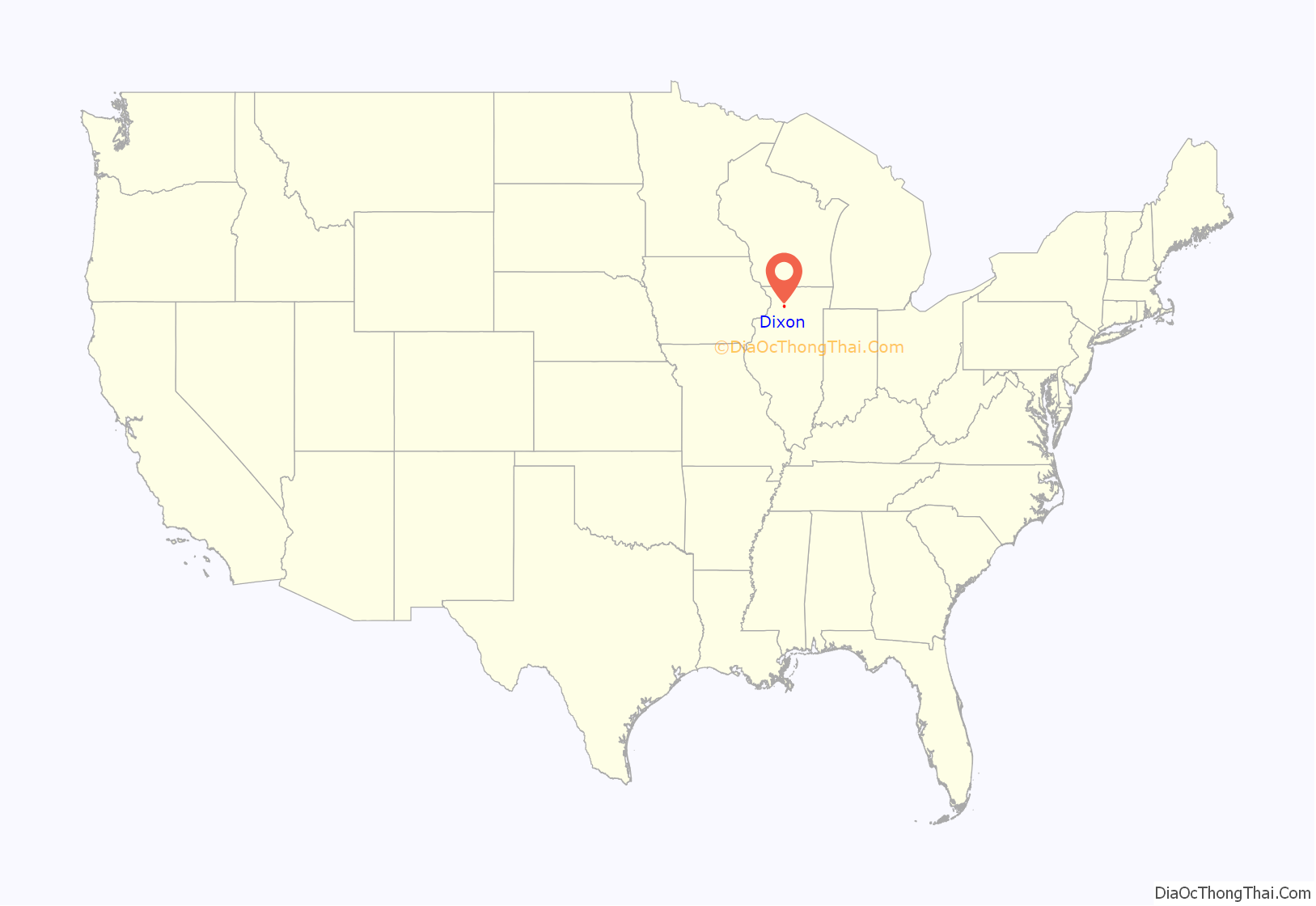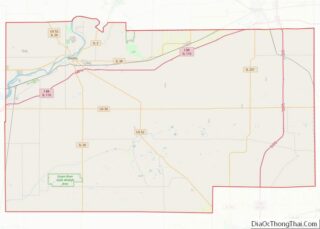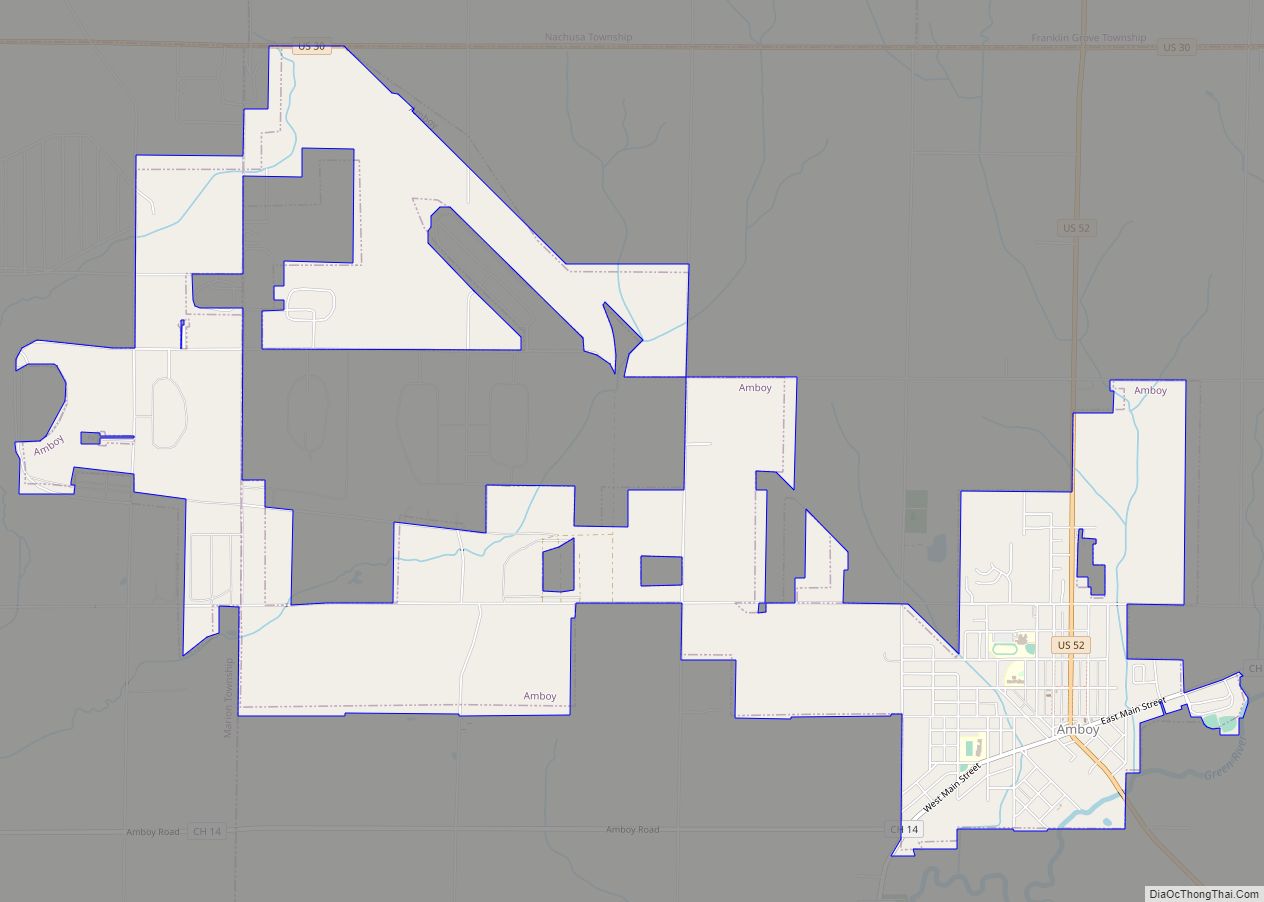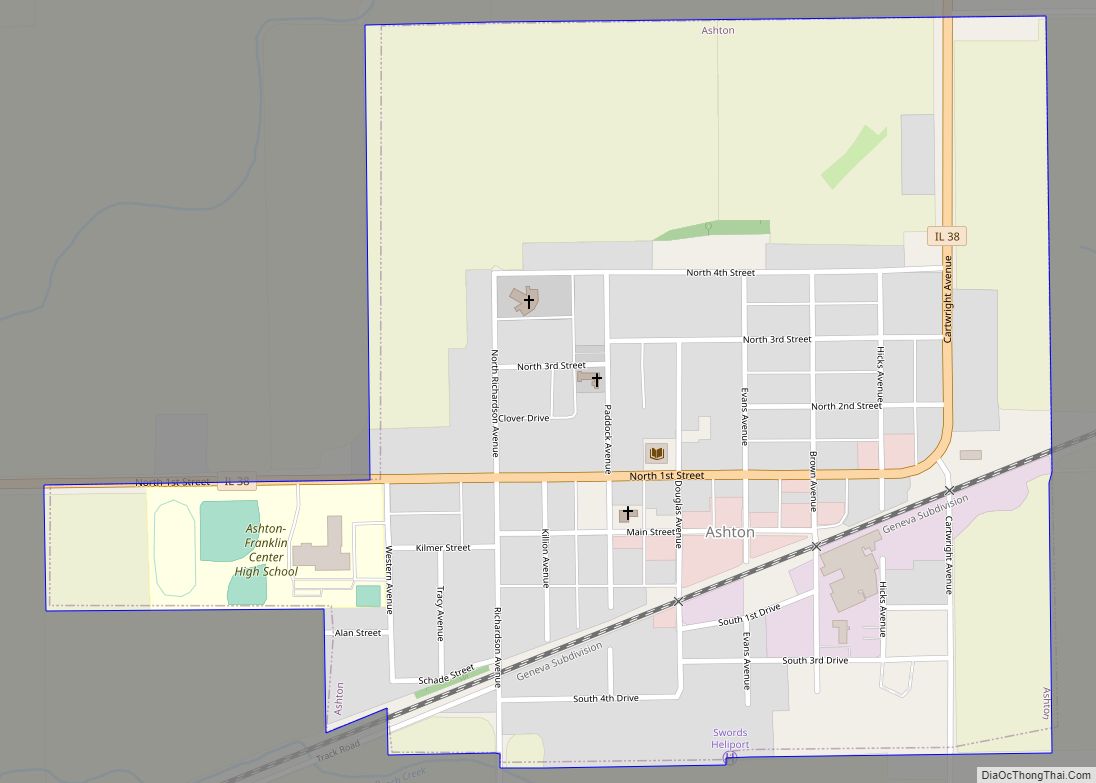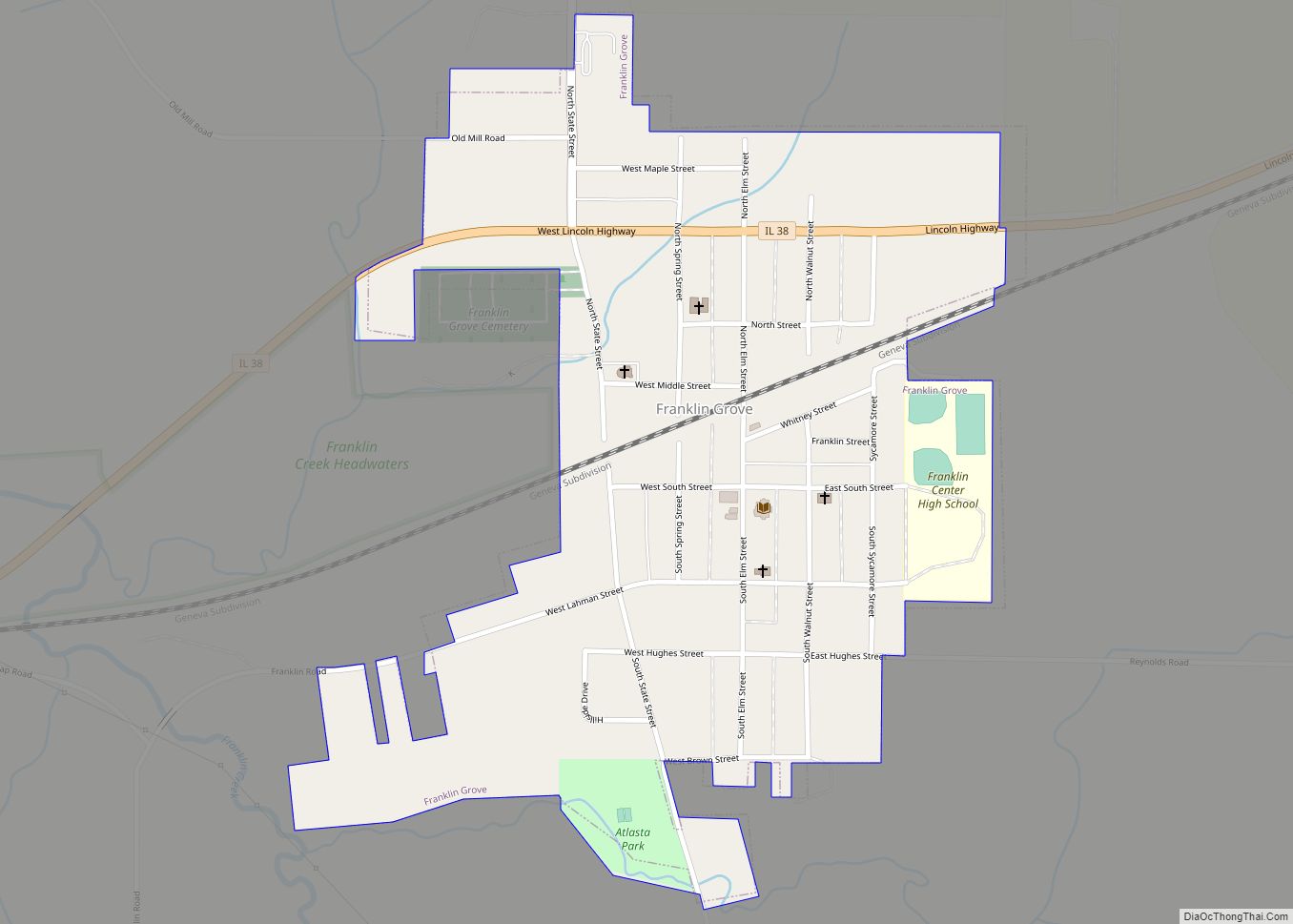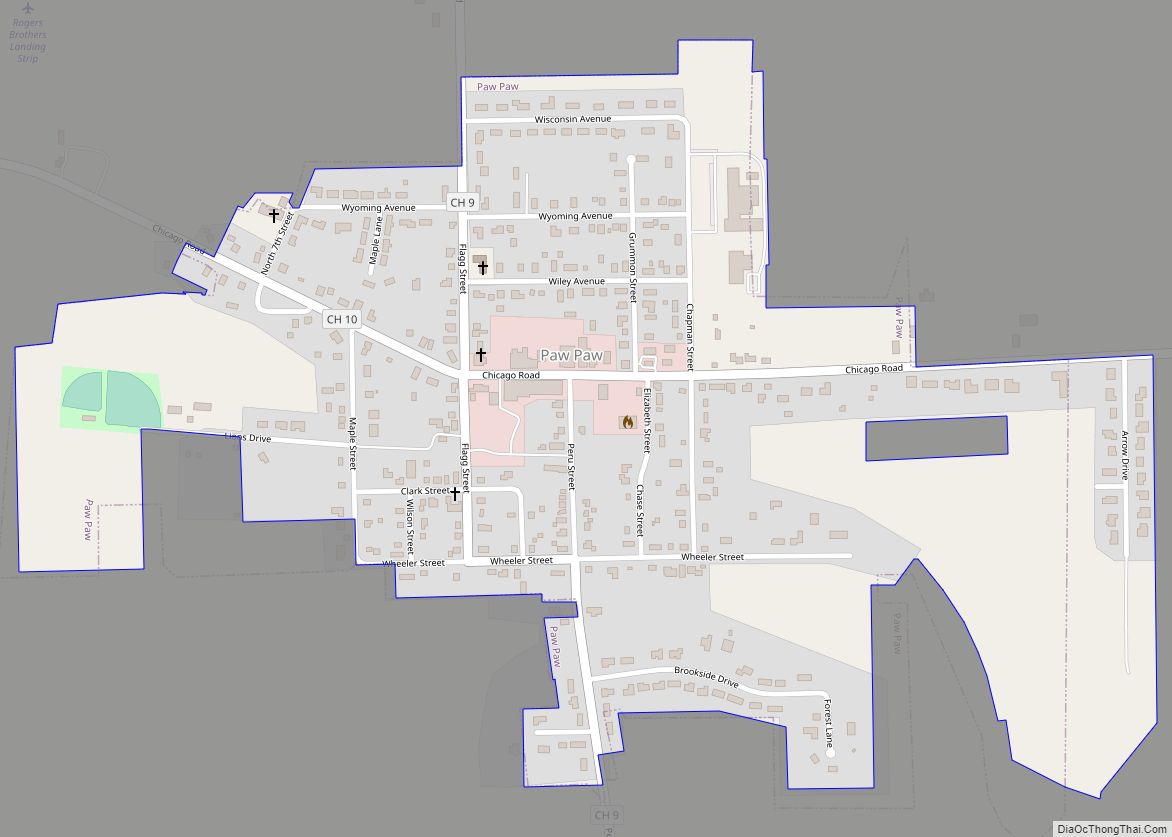Dixon is a city and the county seat of Lee County, Illinois, United States. The population was 15,733 as of the 2010 census, down from 15,941 in 2000. The city is named after founder John Dixon, who operated a rope ferry service across the Rock River, which runs through the city. The Illinois General Assembly designated Dixon as “Petunia Capital of Illinois” in 1999 and “The Catfish Capital of Illinois” in 2009.
Dixon was the boyhood home of former U.S. President Ronald Reagan. The city is also the site of the Lincoln Monument State Memorial, marking the spot where Abraham Lincoln joined the Illinois militia at Fort Dixon in 1832 during the Black Hawk War. The memorial is located on the west side of Dixon’s main north-south street, Galena Avenue, (U.S. Route 52, also Illinois Route 26), north of the Rock River. The city is also the site of the Dixon Bridge Disaster of 1873, the worst road bridge disaster in American history. A marker for the disaster stands near the Lincoln Statue, on the north bank of the river.
| Name: | Dixon city |
|---|---|
| LSAD Code: | 25 |
| LSAD Description: | city (suffix) |
| State: | Illinois |
| County: | Lee County |
| Elevation: | 712 ft (217 m) |
| Total Area: | 8.79 sq mi (22.76 km²) |
| Land Area: | 8.48 sq mi (21.96 km²) |
| Water Area: | 0.31 sq mi (0.80 km²) |
| Total Population: | 15,274 |
| Population Density: | 1,801.60/sq mi (695.64/km²) |
| Area code: | 815 |
| FIPS code: | 1720162 |
| Website: | www.discoverdixon.org |
Online Interactive Map
Click on ![]() to view map in "full screen" mode.
to view map in "full screen" mode.
Dixon location map. Where is Dixon city?
History
Around 1828, Joseph Ogee, a man of mixed French and Native American descent, established a ferry and a cabin along the banks of the Rock River. In 1829, an employee of Ogee was named postmaster at the newly constructed post office. John Dixon, the eponymous founder, bought Ogee’s Ferry in the spring of 1830 and brought his family to his newly purchased establishment on April 11 of that year. Shortly after, the name of the post office was changed to Dixon’s Ferry.
On May 4, 1873, the Truesdell Bridge collapsed resulting in the deaths of 45 people. A large number of people were on the bridge in order to watch a baptism ceremony in the river below.
Running by Interstate 88 is a road named Bloody Gulch Road. The road is named after a murder and body disposal. On September 12, 1885, two young men walked along a county road south of Dixon, one a farm hand named Joseph M. Mosse and the other, Frank C. Thiel, a traveling salesman from Elgin, IL. The unemployed farmhand told the salesman of a place he could sell his Bibles and proceeded to take him to a farm where he had worked. As the two men passed a gulch the farmhand struck and killed the salesman with a knife and a walnut baluster he was seen carrying under his arm. He then buried the body in the culvert. The body was later discovered when cattle refused to use the underpass en route to a milking barn. An overnight rain had washed away some of the dirt exposing a limb. When the sheriff arrived to question the farm hand, since he was seen leaving Dixon with the deceased, he pretended to get a drink while throwing a watch chain taken from the salesman in the bushes. The evidence was found and the farmhand was eventually put in jail for life, while the road over the underpass began to be called Bloody Gulch Road.
In April 2012, Dixon Municipal Comptroller Rita Crundwell was indicted by a Federal Grand Jury for embezzlement. She used the embezzled funds to pay for her lavish lifestyle and what became one of the nation’s best-known quarter horse-breeding programs, among other things. Crundwell’s crimes, thought to be the most substantial municipal theft in U.S. history, impacted Dixon’s finances severely. Federal prosecutors estimated the amount embezzled at $53 million since 1990. The city sued the auditors who had failed to detect the embezzlement and the bank at which Crundwell maintained a secret account, and received $40 million in settlements. In February 2013, Crundwell was sentenced to almost 20 years in prison.
On May 16, 2018, Matthew Milby, a 19-year-old student, entered Dixon High School and fired shots during graduation practice. He was pursued by School Resource Officer Mark Dallas, of the Dixon Police Department. After firing shots at the officer, the shooter was wounded by Dallas as he returned fire. Milby was then taken into custody. There were no additional injuries. Milby was diagnosed with schizotypal personality disorder and initially found unfit to stand trial. On July 14, 2022 he pleaded guilty to aggravated discharge of a firearm towards a peace officer and aggravated discharge of a firearm in a school building; he was sentenced to thirty years in prison.
Ronald Reagan
Dixon was the boyhood home of the 40th President of the United States, Ronald Reagan. Reagan was born in nearby Tampico and moved to Dixon, aged nine. In his teen years, he lifeguarded along the banks of the Rock River. His family house is preserved at 816 South Hennepin Avenue, and authorized by Congress to become the Ronald Reagan Boyhood Home. On February 6, 1984, during his first term as president, Reagan returned to Dixon to celebrate his 73rd birthday. He toured his boyhood residence and the city held a parade in his honor.
Dixon Road Map
Dixon city Satellite Map
Geography
According to the 2010 census, Dixon has a total area of 7.862 square miles (20.36 km), of which 7.43 square miles (19.24 km) (or 94.51%) is land and 0.432 square miles (1.12 km) (or 5.49%) is water.
Climate
Dixon has a hot summer humid continental climate (Köppen: Dfa) with four seasons. The winters are generally cold and see frequent snowfall, while the summers are warm and humid. Typically Dixon ranges from a low of 10°F (-12°C) to a high of 82°F (28°C). A low of -32°F (-35°C) was recorded during the January–February 2019 North American cold wave, and a record high of 110°F (43°C) was recorded during the 1936 North American heat wave. Average monthly precipitation ranges from 1.43 inches (36 mm) in February to 4.88 inches (124 mm) in June.
See also
Map of Illinois State and its subdivision:- Adams
- Alexander
- Bond
- Boone
- Brown
- Bureau
- Calhoun
- Carroll
- Cass
- Champaign
- Christian
- Clark
- Clay
- Clinton
- Coles
- Cook
- Crawford
- Cumberland
- De Kalb
- De Witt
- Douglas
- Dupage
- Edgar
- Edwards
- Effingham
- Fayette
- Ford
- Franklin
- Fulton
- Gallatin
- Greene
- Grundy
- Hamilton
- Hancock
- Hardin
- Henderson
- Henry
- Iroquois
- Jackson
- Jasper
- Jefferson
- Jersey
- Jo Daviess
- Johnson
- Kane
- Kankakee
- Kendall
- Knox
- La Salle
- Lake
- Lake Michigan
- Lawrence
- Lee
- Livingston
- Logan
- Macon
- Macoupin
- Madison
- Marion
- Marshall
- Mason
- Massac
- McDonough
- McHenry
- McLean
- Menard
- Mercer
- Monroe
- Montgomery
- Morgan
- Moultrie
- Ogle
- Peoria
- Perry
- Piatt
- Pike
- Pope
- Pulaski
- Putnam
- Randolph
- Richland
- Rock Island
- Saint Clair
- Saline
- Sangamon
- Schuyler
- Scott
- Shelby
- Stark
- Stephenson
- Tazewell
- Union
- Vermilion
- Wabash
- Warren
- Washington
- Wayne
- White
- Whiteside
- Will
- Williamson
- Winnebago
- Woodford
- Alabama
- Alaska
- Arizona
- Arkansas
- California
- Colorado
- Connecticut
- Delaware
- District of Columbia
- Florida
- Georgia
- Hawaii
- Idaho
- Illinois
- Indiana
- Iowa
- Kansas
- Kentucky
- Louisiana
- Maine
- Maryland
- Massachusetts
- Michigan
- Minnesota
- Mississippi
- Missouri
- Montana
- Nebraska
- Nevada
- New Hampshire
- New Jersey
- New Mexico
- New York
- North Carolina
- North Dakota
- Ohio
- Oklahoma
- Oregon
- Pennsylvania
- Rhode Island
- South Carolina
- South Dakota
- Tennessee
- Texas
- Utah
- Vermont
- Virginia
- Washington
- West Virginia
- Wisconsin
- Wyoming
